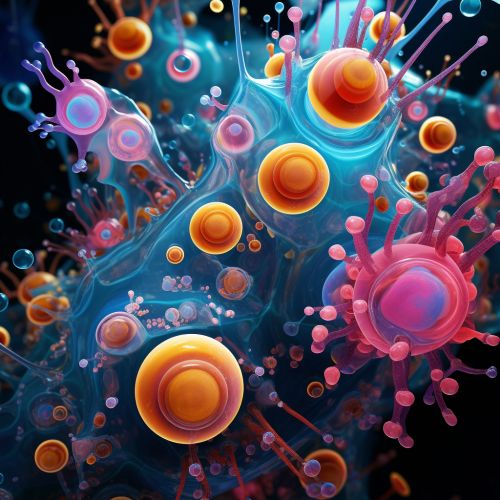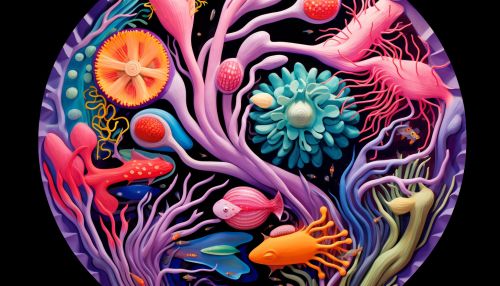Endosymbiotic theory
Overview
The Endosymbiotic theory is a well-established scientific theory that explains the origin of eukaryotic cells from prokaryotic organisms. This theory proposes that some of the organelles in today's eukaryotic cells were once prokaryotic microbes. This theory is central to our understanding of cellular evolution and the complex relationships between different types of cells.


History
The concept of endosymbiosis dates back to the late 19th century, when botanist Andreas Franz Wilhelm Schimper observed that chloroplasts in plant cells resembled cyanobacteria and suggested that they may have a similar origin. However, the modern endosymbiotic theory was largely developed and promoted by American biologist Lynn Margulis in the 1960s and 1970s.
Evidence for Endosymbiotic Theory
There are several lines of evidence that support the endosymbiotic theory. These include:
Genetic Similarities
The DNA of mitochondria and chloroplasts shows substantial similarities to the DNA of certain bacteria. This suggests that these organelles are of bacterial origin.
Structural Similarities
Mitochondria and chloroplasts are similar in size and structure to prokaryotic cells. They also divide in a way that is reminiscent of bacterial binary fission, further suggesting a bacterial origin.
Presence of Ribosomes
Both mitochondria and chloroplasts contain their own ribosomes, which are more similar in size and structure to bacterial ribosomes than they are to eukaryotic ribosomes.
Antibiotic Sensitivity
Mitochondria and chloroplasts are sensitive to antibiotics in a way that is characteristic of bacteria, providing further evidence of their bacterial origin.
Types of Endosymbiosis
There are two main types of endosymbiosis: primary and secondary.
Primary Endosymbiosis
In primary endosymbiosis, a eukaryotic cell engulfs a prokaryotic cell, which then becomes an organelle within the host cell. This is believed to be the process that led to the formation of mitochondria and chloroplasts.
Secondary Endosymbiosis
In secondary endosymbiosis, a eukaryotic cell engulfs another eukaryotic cell that has already undergone primary endosymbiosis. The engulfed cell retains its mitochondria or chloroplasts, leading to a cell with multiple types of organelles. This process is believed to have given rise to certain groups of algae and other complex organisms.
Implications of Endosymbiotic Theory
The endosymbiotic theory has far-reaching implications for our understanding of evolution and the history of life on Earth. It suggests that cooperation and integration between different organisms can play a crucial role in evolution, and that the boundaries between different species may be more fluid than previously thought.
Criticisms and Controversies
While the endosymbiotic theory is widely accepted, it has also faced criticisms and controversies. Some scientists have questioned the evidence for the theory, while others have proposed alternative theories for the origin of eukaryotic cells. Despite these criticisms, the endosymbiotic theory remains the most widely accepted explanation for the origin of mitochondria and chloroplasts.
